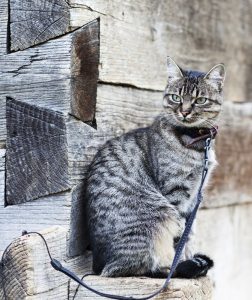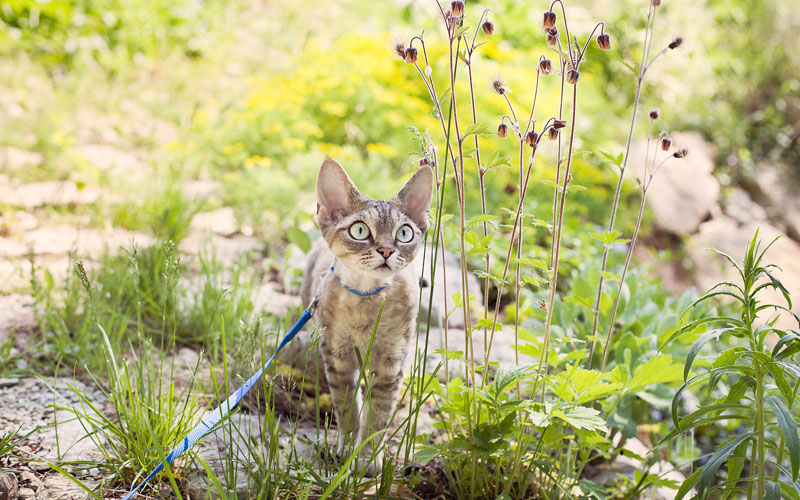Do you have grand plans to teach your cat to walk on a leash? Kristie Bradfield discovers what you need to know before getting started.
For Ricki Barnes, leash training became necessary after moving house. While her cats had previously lived outdoors, their new home sat across the street from a large patch of bushland and this worried Ricki. “I decided that they just couldn’t be trusted to stay out of that area, so they became indoor cats. They never lost the desire to go outside, though, so I trained them to walk on the harness and leash.”
Despite some initial issues, Ricki’s four cats — Sanura, Toby, Mischka and Miss Kitty — have been proud leash walkers for seven years. Natalie Carmody is another leash-walking cat owner who wanted to give her Siberian Forest cross, Mia, access to nature. “We were in a block of flats on the ground floor where there were no fences around the front garden that opened onto a street,” says Natalie. “I wanted her to spend time outside.”
Ricki and Natalie’s stories echo those of other cat walkers, whose main motivation is to keep their cats’ connection with the natural world intact. Instead of simply opening the back door and letting their cats run riot, they choose to keep their cats and local wildlife safe by monitoring where their pets can explore. While walking cats on a leash isn’t a new concept, the practice is receiving a groundswell of support all over the world, thanks in part to the power of social media. So how do cats benefit from these trips outside and how can you get started?

How do I train my cat?
While it is possible to take your cat into the wild without training, Regina believes it’s important that cats come when their name is called. She also recommends that skills such as “sit” and “stay” be learned, because they can be beneficial in keeping your cat safe at home and outdoors. “If your cat enjoys learning, then by all means teach your cat different commands and tricks — always ensuring it is a fun experience. Clicker training is not just for dogs,” says Regina. If you’ve trained your cat before, you’ll be aware of motivations used to teach them. If this is your first time training a feline, it’s important to understand that any skill you teach should be learned in a positive way.
The right fit
The fit of a harness is essential for the success of a walk. Once your cat has it on, you can determine if it needs adjusting. You should be able to slip a couple of fingers under the harness. If the harness is too tight, it will restrict the cat’s ability to walk, but if it’s too loose, the cat can escape it. Make sure to reward your cat’s good behaviour while adjusting the fit.


Leave a Reply